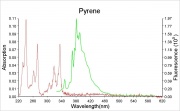Difference between revisions of "Carbon tetrachloride"
Jump to navigation
Jump to search
m (Text replace - "== Authority ==" to "== Sources Checked for Data in Record ==") |
|||
| Line 8: | Line 8: | ||
tetrachloromethane; tetrachlormethane; perchloromethane; tetrachlorocarbon; Carbona; Pyrene | tetrachloromethane; tetrachlormethane; perchloromethane; tetrachlorocarbon; Carbona; Pyrene | ||
| − | == | + | == Risks == |
| − | + | * Nonflammable. | |
| + | * Forms phosgene in electrical fires, high heat or ultraviolet light. | ||
| + | * Very toxic by inhalation, ingestion and skin absorption. | ||
| + | * Carcinogen and teratogen in both males and females. | ||
| + | * ThermoFisher: [https://www.fishersci.com/store/msds?partNumber=AC148170010&productDescription=CARBON+TETRACHLORIDE+99+1LT&vendorId=VN00033901&countryCode=US&language=en SDS] | ||
| − | Insoluble in water at room temperature. At elevated temperatures, carbon tetrachloride can slowly react with water to form hydrochloric acid. | + | ==Physical and Chemical Properties== |
| + | |||
| + | * Miscible in ethanol, benzene, chloroform, ether, carbon disulfide, ligroin. | ||
| + | * Insoluble in water at room temperature. At elevated temperatures, carbon tetrachloride can slowly react with water to form hydrochloric acid. | ||
{| class="wikitable" | {| class="wikitable" | ||
| Line 23: | Line 30: | ||
|- | |- | ||
! scope="row"| Melting Point | ! scope="row"| Melting Point | ||
| − | | -23 | + | | -23 C |
|- | |- | ||
! scope="row"| Density | ! scope="row"| Density | ||
| − | | 1.589 | + | | 1.589 g/ml |
|- | |- | ||
! scope="row"| Molecular Weight | ! scope="row"| Molecular Weight | ||
| Line 35: | Line 42: | ||
|- | |- | ||
! scope="row"| Boiling Point | ! scope="row"| Boiling Point | ||
| − | | 76.7 | + | | 76.7 C|} |
| − | |} | ||
| − | |||
| − | |||
| − | |||
| − | |||
| − | |||
| − | |||
== Comparisons == | == Comparisons == | ||
| Line 48: | Line 48: | ||
[[media:download_file_117.pdf|Properties of Common Solvents]] | [[media:download_file_117.pdf|Properties of Common Solvents]] | ||
| − | + | ==Resources and Citations== | |
| − | |||
| − | == | ||
* R. J. Gettens, G.L. Stout, ''Painting Materials, A Short Encyclopaedia'', Dover Publications, New York, 1966 Comment: sp. grav. = 1.629 | * R. J. Gettens, G.L. Stout, ''Painting Materials, A Short Encyclopaedia'', Dover Publications, New York, 1966 Comment: sp. grav. = 1.629 | ||
| Line 78: | Line 76: | ||
* ''The American Heritage Dictionary'' or ''Encarta'', via Microsoft Bookshelf 98, Microsoft Corp., 1998 | * ''The American Heritage Dictionary'' or ''Encarta'', via Microsoft Bookshelf 98, Microsoft Corp., 1998 | ||
| − | * | + | * Conservation termlist at www.hants.org.uk/museums (accessed 2001) |
[[Category:Materials database]] | [[Category:Materials database]] | ||
Revision as of 08:59, 20 May 2022
Description
A colorless, volatile liquid with a sweet, distinctive odor. Carbon tetrachloride was first produced in 1839 in Germany. It was used for many years to dissolve waxes, fats, and degrease metals. It was also a popular dry cleaning solvent and spot remover, however it is no longer widely used because of its toxicity. Carbon tetrachloride was once used as a single component fumigant and as a component in funigamt mixtures (Dowfume 75). Carbon tetrachloride was also used for a while in fire extinguishers (Pyrene), but was discontinued because it decomposed in high heat to form Phosgene, a highly poisonous gas.
Synonyms and Related Terms
tetrachloromethane; tetrachlormethane; perchloromethane; tetrachlorocarbon; Carbona; Pyrene
Risks
- Nonflammable.
- Forms phosgene in electrical fires, high heat or ultraviolet light.
- Very toxic by inhalation, ingestion and skin absorption.
- Carcinogen and teratogen in both males and females.
- ThermoFisher: SDS
Physical and Chemical Properties
- Miscible in ethanol, benzene, chloroform, ether, carbon disulfide, ligroin.
- Insoluble in water at room temperature. At elevated temperatures, carbon tetrachloride can slowly react with water to form hydrochloric acid.
| Composition | CCl4 |
|---|---|
| CAS | 56-23-5 |
| Melting Point | -23 C |
| Density | 1.589 g/ml |
| Molecular Weight | mol. wt. = 153.8 |
| Refractive Index | 1.4607 |
| Boiling Point | }
ComparisonsResources and Citations
|
